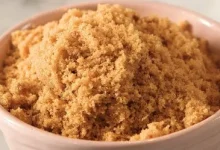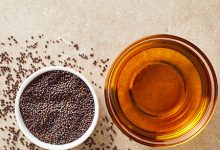Fragrance vs Perfume: What’s the Difference?
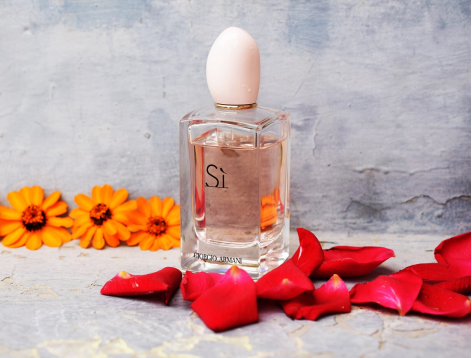
Are you confused about the difference between fragrance and perfume? Do you find yourself wondering what makes them distinct from each other?
Today, we will delve into the world of fragrances and perfumes to help you understand the key differences between them. We will explore the manufacturing process behind both types of scents, including the art of collection, extraction, blending, and aging.
Additionally, we will debunk some common misconceptions surrounding fragrances and perfumes. Lastly, we’ll answer one of the most frequently asked questions:
Read on to discover everything you need to know about fragrances and perfumes.
Understanding Fragrances and Perfumes
Comprising natural essences and aromatic compounds, fragrances offer varying scent preferences through eau de parfum, eau de toilette, and eau fraiche. Perfumes, with higher concentrations than body mists, determine longevity based on chemical and natural ingredient blends.
Next time you choose a fragrance, consider the much lower fragrance concentration in masculine scents. The Drug Administration regulates this, with EDT and EDP being common types of fragrances.
The Essence of Fragrances
Fragrances vary widely, including floral, citrus, lavender, vanilla, sandalwood, lemongrass, jasmine, cinnamon, and amber. Perfume oil concentration ranges from pure perfume without alcohol essence to much lower fragrance concentration.
The choice of fragrance type depends on individual preference for floral scents, oil base, or pleasant odor. Market demands are met by combining natural essences and synthetics. Intensities and application durations differ among fragrances like eau de cologne, eau de toilette, and eau fraiche.
The Magic of Perfumes
The art of collecting and extracting natural essences is a crucial part of the manufacturing process of perfumes. The science of blending and aging these ingredients results in varying fragrance concentration levels, defining the unique DNA of each perfume.
Perfume oil base, with a much lower fragrance concentration, is ideal for daywear or lighter spray compositions. Understanding this process helps us to appreciate the complexities behind the scents we love.
Delving into the Manufacturing Process
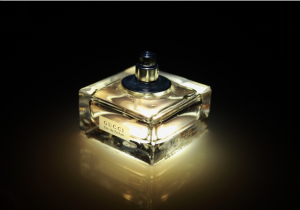
The manufacturing process of perfumery revolves around combining natural ingredients, chemicals, and aromatic compounds to create various types of perfume with unique fragrance concentrations and scent compositions.
The FDA regulates fragrance concentration levels to ensure safety and pleasant odor. Perfume oils, fragrance oils, and natural essences are utilized for different scent preferences, offering much lower fragrance concentrations in products like eau fraiche for a light, pleasant odor.
The Art of Collection and Extraction
The process of gathering and extracting natural essences, floral scents, and aromatic compounds is fundamental to the creation of fragrances. It involves sourcing natural ingredients like lavender, vanilla, lemongrass, sandalwood, and jasmine, which contribute to the distinct scent profiles.
Different levels of oil concentration, such as perfume oil, pure perfume, and fragrance concentration, play a crucial role in defining the right scent for individuals. Additionally, various fragrance types, including body mists, lotions, and splashes, cater to diverse scent preferences, ranging from light to intense compositions.
The Science of Blending and Ageing
The right scent composition arises from blending natural essences, perfume oil concentration, and fragrance concentration levels. This blend results in fragrances with much lower fragrance concentrations, meeting varied market demands. The process involves combining natural essences, synthetics, oil bases, and aromatic compounds to create unique scent compositions.
Careful blending of essential oils, fragrance oil, and perfume essence ensures a perfect scent composition. Aging of fragrances like Eau de parfum, eau de toilette, and eau fraiche harmonizes aromatic compounds and natural essences over time.
Fragrance vs Perfume: The Differences
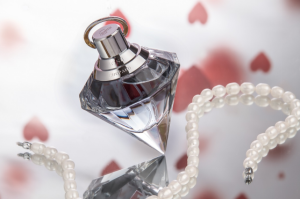
Fragrance and perfume are terms often used interchangeably, but they can have different meanings depending on the context. Let’s explore the key differences between fragrance and perfume:
1. Definition:
- Fragrance:This is a broad term that encompasses any pleasant or distinctive smell. It can refer to scents in general, including those found in perfumes, colognes, candles, air fresheners, and more.
- Perfume:Specifically, perfume refers to a concentrated fragrance in liquid form. It is a type of fragrance created by combining aromatic compounds with solvents, fixatives, and other ingredients.
2. Concentration of Aromatic Compounds:
- Fragrance: The term “fragrance” doesn’t specify the concentration of aromatic compounds. It can be used broadly to describe scents regardless of their strength.
- Perfume: Perfumes typically have a higher concentration of aromatic compounds compared to other scented products. The concentration may vary, but perfumes are generally more potent and long-lasting.
3. Product Types:
- Fragrance:It can refer to a wide range of scented products, including perfumes, colognes, body sprays, lotions, and even scented household items.
- Perfume: Specifically denotes a product created for personal fragrance. Perfumes come in various forms, including eau de parfum, eau de toilette, and more, each with a different concentration of aromatic oils.
4. Application and Usage:
- Fragrance:The term is generic and doesn’t specify the intended use or application method. Fragrances can be found in various products meant for personal use, home, or even in industrial settings.
- Perfume: Refers to a specific product designed for personal application to enhance one’s scent. Perfumes are commonly applied to pulse points like the wrists and neck.
5. Variety and Complexity:
- Fragrance:This can be simple or complex, depending on the product. Fragrances are found in a wide variety of scented items, each with its unique composition.
- Perfume:Often involves a complex blend of top, middle, and base notes to create a well-rounded and long-lasting scent. Perfume formulations are crafted with precision by perfumers.
6. Naming and Marketing:
- Fragrance:The term used when referring to the overall olfactory experience. It is a more generic and encompassing term.
- Perfume:Specifically used for marketing and labeling certain types of concentrated fragrances. Perfume is often associated with higher-end, luxury scents.
In summary, while “fragrance” is a broad term covering any pleasant smell, “perfume” specifically refers to a concentrated fragrance created for personal use.
When shopping for scented products, understanding the difference can help you choose the type of product that aligns with your preferences in terms of concentration, application, and overall olfactory experience.
Debunking Common Misconceptions
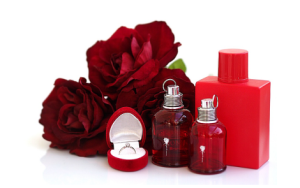
Contrary to common misconceptions, fragrances and perfumes are not just chemicals but a blend of natural essences, aromatic compounds, and synthetics. Today, the market offers a wide range of fragrance types with varying concentration levels to cater to different scent preferences.
The right scent composition, whether citrus, floral, vanilla, or lemongrass, is achieved through a combination of natural essences and aromatic compounds, resulting in pleasant odors derived from natural ingredients and fragrance concentration, rather than solely chemicals.
Is there any difference between Arabic Perfume and Alcohol-free Perfume?
Arabic perfume and alcohol-free perfume differ in fragrance concentration levels, aroma, and scent composition. Arabic perfume offers long-lasting scent due to its high fragrance oil concentration, while alcohol-free perfume provides a light odor suitable for daywear.
Both undergo the same manufacturing processes using natural essences, aromatic compounds, and oil concentration.
Conclusion
The main difference between fragrance and perfume lies in their concentration. Fragrances have a lower concentration of aromatic compounds, making them ideal for everyday use. On the other hand, perfumes have a higher concentration, resulting in a stronger and longer-lasting scent.
Additionally, perfumes often go through a more intricate manufacturing process, involving the art of collection, extraction, blending, and aging. It’s important to understand these differences when choosing a fragrance or perfume that suits your preference and occasion.
So, whether you opt for a light and refreshing fragrance or a bold and captivating perfume, embrace the power of scent and let it enhance your personal style and leave a lasting impression.







